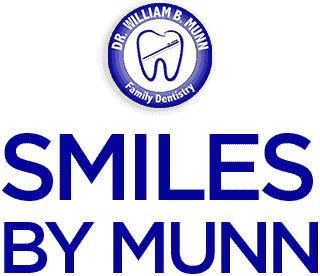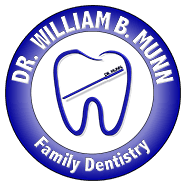
The discomfort or appearance of a decayed or damaged tooth can affect you on a daily basis, interfering with your chewing, speech and confidence. If you have a tooth with a large cavity or substantial structural damage, Dr. William Munn may advise you to have it covered and protected with a dental crown.
What Is a Dental Crown?
Dental crowns are restorations that resemble natural teeth in terms of size, shape and contours. Most crowns are placed for restorative reasons, although Dr. Munn occasionally uses them in cosmetic cases wherein an imperfect tooth requires more coverage than a veneer can provide.
Crowns are extremely strong and durable. They enable you to bite and chew your favorite foods without pain, and speak without pronunciation problems. A well-fitting crown will also create a tight seal so bacteria cannot reach the natural tooth and cause additional decay.
Various materials are used to construct crowns. Porcelain crowns are attractive and lifelike, making them a popular choice. Other crown materials include metal, porcelain-fused-to-metal and resin.
How Is a Dental Crown Placed?
The process to design and place a dental crown usually involves at least two visits to our office. Dr. Munn will numb the affected tooth so you do not experience discomfort at any point in your treatment.
At the first appointment, the dentist will determine whether a crown is the most suitable solution for your dental needs. Then, he will decide on the best type of material to use for your crown, based on the location of the affected tooth in your mouth and other factors.
Once Dr. Munn has determined the basics of your crown, he will prepare the tooth receiving the crown by removing decayed or damaged tooth structure. When the tooth is prepared, he will take impressions. These impressions are useful to the dental laboratory creating the crown. They help the lab match your crown to the contours of your gums and the size and shape of the adjacent teeth.
Dr. Munn can place a temporary crown while your permanent crown is being constructed.
When your new restoration is ready, another visit is scheduled. The dentist will remove your temporary crown and position the new crown. If you are satisfied with the way it feels and looks, and he confirms that the crown supports a healthy bite, he will cement it into place.

Dental Crown Care
Crowns are low-maintenance and can be cared for similarly to a natural, healthy tooth. Dr. Munn and our team encourage you to brush twice a day and floss daily, paying special attention to the chewing surfaces and the contact points between the crown and adjacent teeth. Regular dental visits with our dentist and hygienists will ensure your crown is functioning as it should.
Your new crown is strong but not indestructible. Certain behaviors, such as eating very hard foods or opening bottles or packages with your crowned tooth, can damage or dislodge the restoration. To avoid complications that would necessitate repair or replacement, use common sense and avoid putting excessive pressure on the crown. If you are aware that you grind or clench your teeth at night, have yourself fitted for a mouth guard to protect your new investment.
Learn More about Dental Crowns
Want more information about dental crowns and how Dr. Munn uses them? Call or email our Sandston dental practice and request a consultation with our experienced dentist today.



